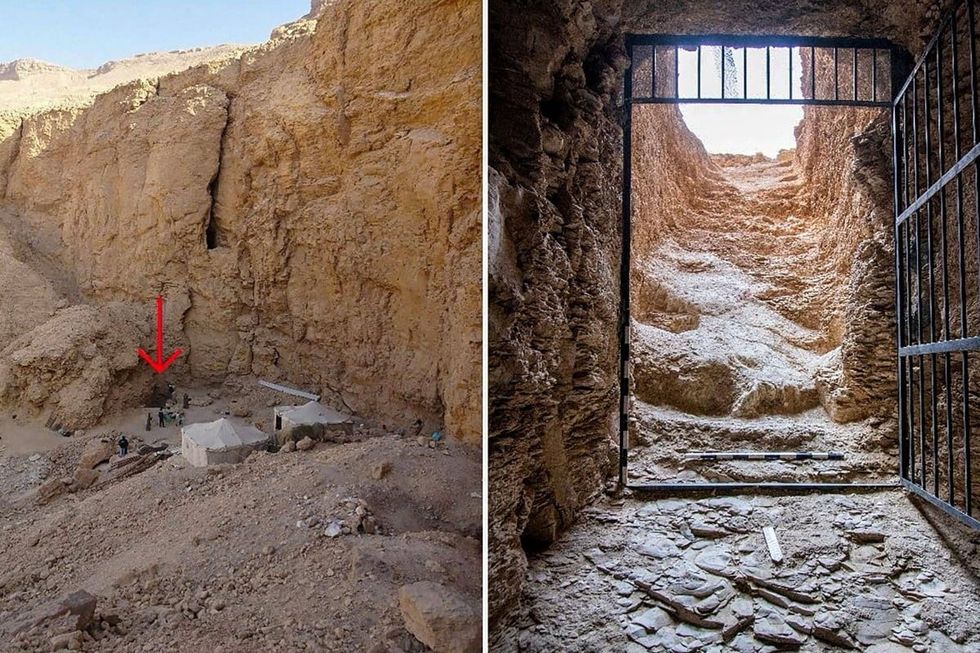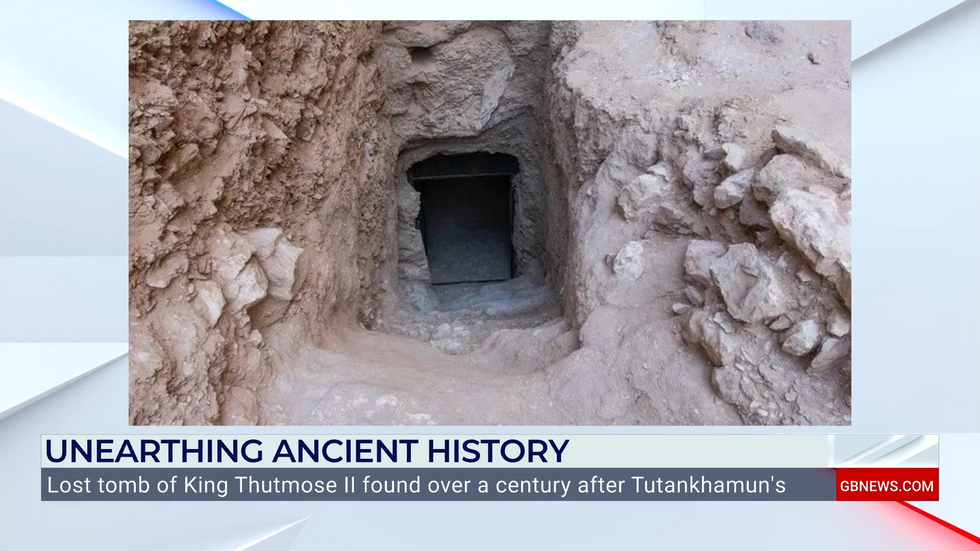Lost tomb of King Thutmose II found over a century after Tutankhamun's
GB News
The team suspects this second site may contain the pharaoh's mummified remains
Don't Miss
Most Read
Trending on GB News
A British archaeologist believes he has located a second tomb belonging to King Thutmose II beneath a massive limestone pile near Luxor, Egypt.
Dr Piers Litherland's potential discovery comes just days after his team revealed the first tomb of a pharaoh since Tutankhamun's was found over 100 years ago.
The team suspects this second site may contain the pharaoh's mummified remains.
The first tomb was discovered behind a waterfall in an area typically associated with royal women's burial sites.

Dr Piers Litherland's potential discovery comes just days after his team revealed the first tomb of a pharaoh
NEW RESEARCH FOUNDATIONArchaeologists believe this initial tomb was emptied just six years after the burial due to flooding.
A posthumous inscription discovered during the search indicated that Thutmose II's wife and half-sister Hatshepsut had moved the contents to a second location nearby.
Dr Litherland believes the second tomb lies beneath a 23-metre man-made pile of limestone, ash, rubble and mud plaster near Luxor.
The ancient Egyptians designed this structure to appear as part of a mountain in the Western Valleys of the Theban Necropolis.
MORE LIKE THIS:
- Archaeology breakthrough as experts hail find of 2,000-year-old decapitated remains in bog
- Archaeology breakthrough: Scientists make incredible discovery in depths of where Bible says Moses parted Red Sea
- Archaeology breakthrough: Tomb of 3,500-year-old Egyptian pharaoh uncovered in first major discovery since Tutankhamun
 Prof Litherland discovered a rocky staircase at the bottom of a steep cliff face in the Valley of the Kings - inside was Thutmose II's tombMINISTRY OF ANTIQUITIES
Prof Litherland discovered a rocky staircase at the bottom of a steep cliff face in the Valley of the Kings - inside was Thutmose II's tombMINISTRY OF ANTIQUITIESThe British-Egyptian team is carefully excavating by hand after tunnelling attempts were deemed too dangerous.
"We should be able to take the whole thing down in about another month," Dr Litherland said.
The first tomb's royal status was confirmed by distinctive decorations in the burial chamber.
"Part of the ceiling was still intact: a blue-painted ceiling with yellow stars on it. And blue-painted ceilings with yellow stars are only found in kings' tombs," said Dr Litherland.
 The second tomb is believed to lie beneath a 23-metre man-made pile of limestone, ash, rubble and mud plasteGB NEWS
The second tomb is believed to lie beneath a 23-metre man-made pile of limestone, ash, rubble and mud plasteGB NEWS Despite being found in an area typically reserved for royal women, the chamber's decorative elements clearly identified it as a pharaoh's tomb.
Thutmose II was married to Queen Hatshepsut, who became one of Egypt's most renowned pharaohs and one of the few women to rule in her own right.
The pharaoh, who ruled from approximately 1493 to 1479 BC, was an ancestor of the famous Tutankhamun.
Tutankhamun's own tomb was discovered by British archaeologists in 1922.
Speaking about the remarkable discovery, Dr Litherland described the emotional impact of such unexpected finds.
"The emotion of getting into these things is just one of extraordinary bewilderment because when you come across something you're not expecting to find, it's emotionally extremely turbulent really," he said.
The excavation work continues as archaeologists carefully dismantle the limestone structure.







